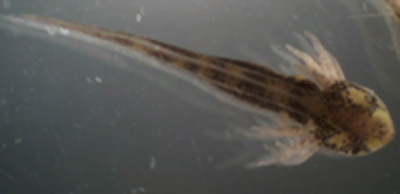From the various microsurgical procedures of Spemann and others, several developmental principles have emerged about amphibian embryos. One of the most important discoveries was the understanding that the developmental fates of various groups of cells are not rigidly determined early in development. In many cases, if a multicellular fragment of an early frog gastrula is transplanted from one region of the embryo to another, the cells will behave as if they were cells from the inserted site, producing structures that would normally develop in that part of the embryo.
Later in development, however, cells of transplanted fragments develop differently. They tend to continue along the same developmental pathways that they would have followed in their original location. They differentiate as if they had not been transplanted, thus producing an anomalous patch of misplaced tissue.
Experiments by DuShane in the 1930s revealed that the neural crest elements are precursors of pigment cells. To demonstrate that the pigment cells are derived from the neural crest, we plan to transplant the crest material to another region of the frog's body. Neural crest cells form a dorsally placed wedge between the lateral wall of the neural fold and the ectoderm on each side of the embryo, thus the removal of the lateral neural fold removes a portion of the neural crest.

A young axolotl embryo.
Objective
In this experiment we will transplant neural crest elements from one embryo into the ventral surface of another embryo and observe how the transplantation effects the development of the embryo. Because pigment cells develop from the neural crest region, a successful transplantation would result in a group of pigment cells arising where the neural crest cells are transplanted to. Finally we will observe whether the donor embryo can recover from the surgery and still make the neural crest after we have removed the lateral neural tube.

An axolotl embryo, an example of what was used in this lab.
Protocol
I. Preparation of Microsurgery Tools
Follow protocol found on the general protocol web page.
II. Microsurgery preparation:
1. Manually dejelly embryo of stage 14 and keep in HSBt containing antibiotics until use. For microsurgery, also remove membrane around the embryo.
2. Prepare 2% agarose-coated operating dish. Rinse with HBSt and antibiotics.
3. Place embryos into operating dish containing 1X HBSt and antibiotics.
4. Use clean technique while performing microsurgery (i.e. dip all tools, pipettes, and glass bridges into 70% ethanol and then into sterile HBSt before using).
III. Transplantation of the neural crest
1. Prepare a small pocket in the ventral surface of the host embryo. Only a slit is required by cutting with a glass needle. The pocket can be enlarged to receive the transplant by carefully removing some of the mesoderm cells with the tip of the glass needle.
2. Using a fine-tipped needle, remove part of the neural fold on the right side of the embryo. With a single motion from the anterior to the posterior, use the glass needle to make a thin tear in the pigmented epidermis very close to the outer edge of the right neural fold. Now, tear carefully through the whitish mesodermal cells that lie underneath. When the grayish-tan endodermal cells become visible, stop cutting. Follow the first longitudinal cut with a second parallel cut at the inner edge of the right neural fold. Next, make two transverse cuts, anterior to posterior, to complete a rectangular area of neural fold tissue.
3. Lift the entire rectangular area of neural tissue away from the embryo with the tip of the glass needle. The piece should include a whitish mesoderm with the overlying pigmented ectoderm.
4. Transfer the neural fold transplant on the tip of the glass needle to the ventral pocket on the recipient embryo. Gently and firmly push the whole mass through the narrow incision and anchor it against the yolk. A tight fitting transplant is desirable.
5. Quickly cover the implant with the flat surface of a piece from a thin-grade coverslip. Wait one hour.
6. Carefully remove the coverslip. If the transplant has not healed properly, place it under pressure again for another half hour. After healing is complete, transfer both the donor and the host embryos to a glass dish containing spring water.
7. Observe the differentiation of the implanted tissue. Note whether graft was successfully transplanted, how the embryo responded to the graft, and whether there have been any differences which have occurred in the development of the embryo.
Results
Twenty embryos were surgically manipulated. Of those 20, eight were deemed possibly successful transplants. However, upon checking the embryos after 48 hours, it was determined that none of the embryo successfully accepted the grafts.
Why did this happen? It was most likely because we did not possess the manual dexterity which was required to perform microsurgery on the small embryos. Additionally, the glass cover plates which were placed on top of the embryos post-surgery caused the embryos to be pulled apart after we attempted to remove them 48 hours post-op.
We feel that this lab would be better to perform with later stage embryos or by a person with the necessary dexterity to manipulate the delicate embryos.
